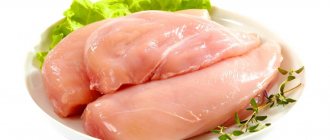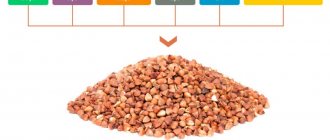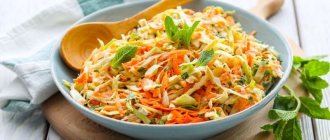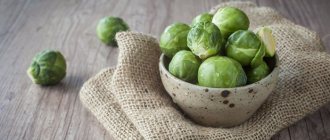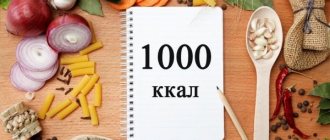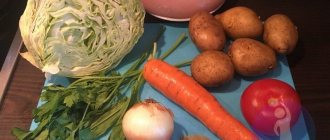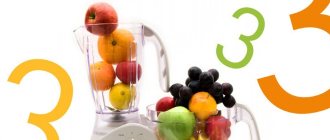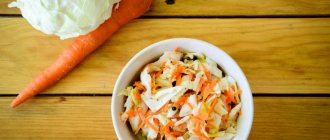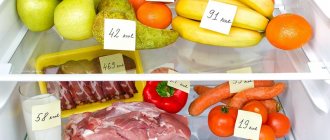General rules
In order to maintain normal weight or get in order after holiday feasts, many take fasting days. For unloading, various vegetables and fruits, kefir, cottage cheese and other products are used. Nutritionists recommend spending a fasting day on cabbage (its various types).
Why was this particular vegetable chosen? First of all, due to its low calorie content: 100 grams of Chinese cabbage contains 16 kcal, white cabbage - 25 kcal, red cabbage - 26 kcal, cauliflower - 30 kcal, Brussels sprouts - 35 kcal and it contains more protein, kohlrabi - 42 kcal. Low carbohydrate content and minimal fat make it a healthy food for obesity and diabetes .
Tartronic acid has a positive effect on fat metabolism - it slows down the process of converting carbohydrates into fats and the formation of new fat deposits. Therefore, holding fasting days once a week and frequently including this vegetable in the diet helps bring your weight in order. Keep in mind that heat treatment destroys this acid.
Cauliflower and broccoli are champions in the content of glucosinolates , which suppress inflammatory processes, fight free radicals, turning into isothiocyanates . Isothiocyanates also prevent the deposition of fat in fiber because they have the ability to stabilize blood sugar levels. Red cabbage contains natural fat burners ( anthocyanins ) that give it its color.
In addition, other beneficial properties of the vegetable are taken into account:
- Insoluble fiber (its content is 2-3 g/100 g) is a natural sorbent (removes excess cholesterol ) and also normalizes intestinal function (improves peristalsis), preventing constipation . It slows down the absorption of carbohydrates, preventing an increase in blood glucose and fat levels. The body spends a lot of energy on digesting coarse dietary fiber. Moreover, energy consumption exceeds the energy value of cabbage, so all cruciferous vegetables are classified as foods with a negative calorie content.
- Rich in vitamin C - 100 g contains 66.7% of the daily value. In addition, the vitamin and mineral composition includes: vitamins A , PP, K (63% of the daily value), U, B, as well as potassium (12%), calcium, phosphorus, chromium (10%), cobalt (30%) , iodine and sulfur (3.7%).
- The outer green leaves contain folic acid , which has a positive effect on metabolic processes.
- The predominance of potassium salts over sodium is manifested by a diuretic effect.
- choline content helps normalize fat metabolism in the body.
- Freshly squeezed juice has a laxative, bile- and diuretic effect, stimulates the production of gastric juice, and has an anti-inflammatory and wound-healing effect.
Basic rules for a fasting day:
- You can use any type of cabbage - white, cauliflower, Brussels sprouts, Savoy, kohlrabi, broccoli.
- The daily intake of any type of cabbage is no more than 1.5 kg.
- Eat raw or stewed, dividing into equal portions. A salad is prepared from the raw one, seasoned with a small amount of oil. When stewing, a minimum of oil is also added, and to add flavor, onions and tomatoes (tomato juice or tomato paste).
- You can supplement the menu with non-calorie foods (low-fat fish, seafood, boiled chicken breast or turkey), the calorie content of which is 80, 113, 84 kcal, respectively.
- Compliance with the drinking regime: water, herbal or green tea, infusion of berries, decoction of rose hips in a total amount of 1.5-2 liters.
Preservation of beneficial qualities during heat treatment makes it possible to diversify the diet. You can stew this vegetable with carrots, sweet peppers and tomatoes. With five meals a day and portions of 250-300 g per day, you will consume up to 1.5 kg of cabbage. However, when stewing, you will have to minimize the amount of vegetable oil, since the calorie content of the dish increases from 25 to 47 kcal. Also, do not overindulge in salt and seasonings, which increase appetite.
Sauerkraut is also rich in valuable substances, and its calorie content is reduced to 19.4 kcal per 100 g, and this is its advantage. If you wish, you can spend a fasting day on sauerkraut. As a result of lactic fermentation, lactic acid is formed, which prevents the proliferation of pathogenic microflora, which heals the intestines.
the vitamin C requirement and has a calorie content of up to 39 kcal. To unload, take a kilogram of product and divide it into 5 doses. Each serving is seasoned with a spoonful of vegetable oil (no more, since it is high in calories). Protein products can also be included in the diet.
It must be remembered that the fermented product contains a lot of salt, which must be limited when unloading. In addition, the high content of organic acids can irritate the mucous membrane of the gastrointestinal tract, so it is not recommended to use it for peptic ulcers , gastritis , colitis , pancreatitis .
In this regard, if you have no contraindications from the gastrointestinal tract to eating cabbage raw, it is best to take it for unloading. You can choose from different meal options on this day.
Choosing the type of cabbage
If a person does not have serious health problems, then for a one-day diet he can choose any variety of cabbage. If there are any chronic diseases, then they are based on the advice of the attending physician and nutritionist.
The most common type of cabbage is white cabbage. It is included in the menu for gout and gastritis with low acidity. It normalizes metabolism and accelerates the removal of excess fluid from the body.
Those who suffer from gastritis with high acidity and stomach ulcers pay attention to Chinese cabbage. Substances contained in this vegetable:
- protect the gastric mucosa from irritation;
- relieve headaches;
- normalize the emotional background;
- help with anemia.
Material on the topic How to feed garlic: why feeding is needed, what and when to add to the soil so that the shoots do not turn yellow, details about the best compositions, what fertilizers will help or harm garlic
Red cabbage contains the highest amount of fiber and vitamin C compared to other types and varieties. It helps not only to lose weight, but also to strengthen the immune system, slow down the aging process and normalize the functioning of the gastrointestinal tract.
Kohlrabi has a beneficial effect on the digestive system due to its high content of tartronic acid and vitamin C.
Cauliflower is included in the fasting day menu even by those diagnosed with diabetes. Vitamin B7 contained in it normalizes blood glucose levels.
Broccoli has virtually no contraindications. It is consumed in any form, including drinking a decoction. It helps not only to cope with excess weight, but also to normalize the gastrointestinal tract, improve metabolism and remove toxic substances from the body.
Authorized Products
In addition to the main product, on the day of fasting, depending on the option chosen, you can consume:
- Low-fat fish (hake, pollock, cod, blue whiting, haddock) - 400 g. The fish is boiled or baked without salt; bay leaves and onions can be used for cooking.
- Fresh apples up to 800 g.
- Carrots, onions and bell peppers when preparing stewed cabbage.
- Kefir 1% - 1 liter.
- Boiled beef, chicken breast or turkey fillet.
- Weak green tea without sugar, rosehip infusion, herbal tea.
- Still water.
- Vegetable oil and lemon juice for salad dressing.
Table of permitted products
| Proteins, g | Fats, g | Carbohydrates, g | Calories, kcal | |
| cabbage | 1,8 | 0,1 | 4,7 | 27 |
| broccoli | 3,0 | 0,4 | 5,2 | 28 |
| sauerkraut | 1,8 | 0,1 | 4,4 | 19 |
| savoy cabbage | 1,2 | 0,1 | 6,0 | 28 |
| cauliflower | 2,5 | 0,3 | 5,4 | 30 |
| apples | 0,4 | 0,4 | 9,8 | 47 |
| boiled beef | 25,8 | 16,8 | 0,0 | 254 |
| veal | 19,7 | 1,2 | 0,0 | 90 |
| boiled chicken breast | 29,8 | 1,8 | 0,5 | 137 |
| boiled turkey fillet | 25,0 | 1,0 | — | 130 |
| boiled fish | 17,3 | 5,0 | 0,0 | 116 |
| boiled squid | 21,2 | 2,8 | 2,0 | 122 |
| boiled shrimp | 18,9 | 2,2 | 0,0 | 95 |
| boiled mussels | 9,1 | 1,5 | 0,0 | 50 |
| boiled pollock | 17,6 | 1,0 | 0,0 | 79 |
| boiled sea bass | 19,9 | 3,6 | 0,0 | 112 |
| mineral water | 0,0 | 0,0 | 0,0 | — |
| green tea | 0,0 | 0,0 | 0,0 | — |
| hibiscus tea | 0,3 | 0,0 | 0,6 | 5 |
* data is per 100 g of product
Options for fasting days
There are many options for a one-day cabbage diet. The most common ones consist of fresh, stewed and pickled vegetables. The menu contains not only it, but also other low-calorie foods.
On fresh cabbage
The diet can be “hard”, containing only cabbage and water, or “light” - including soups, meat and stews.
Option with meat
Set of required products:
- fresh cabbage – 200 g;
- lean boiled meat – 400 g;
- rosehip decoction – 500 ml;
- still mineral water – 30 ml per kg of weight.
The volume of products is divided into 5 equal meals. Be sure to follow the drinking regime.
On stew
When using stewed cabbage for a fasting day, adhere to the recommended vegetable intake - no more than 1.5 kg of cabbage per day.
When cooking, you can add other vegetables to it - tomatoes, bell peppers and onions. The dish can be stewed with any vegetable oil, preferably olive oil.
On fermented
One of the most difficult options for the body. Before using it, you should consult a doctor, especially those who have problems with the gastrointestinal tract. You can eat no more than 1 kg of sauerkraut per day.
Sauerkraut is mixed with a small amount of vegetable oil and onions. Divide the dish into 5-6 equal parts of 165-200 g, which are eaten per day. A prerequisite is compliance with the drinking regime. When nausea occurs, this salad is eaten with black bread.
Fully or partially limited products
- Animal fats.
- Meat and fish of fatty varieties.
- Fatty dairy products.
- Smoked meats, sausages.
- Any bread.
- Sweets, chocolate, candies, cookies, pastries, cakes, pastries.
- Sugar.
Table of prohibited products
| Proteins, g | Fats, g | Carbohydrates, g | Calories, kcal | |
Vegetables and greens | ||||
| radish | 1,2 | 0,1 | 3,4 | 19 |
| white radish | 1,4 | 0,0 | 4,1 | 21 |
| red radish | 1,2 | 0,1 | 3,4 | 20 |
| black radish | 1,9 | 0,2 | 6,7 | 35 |
| spinach | 2,9 | 0,3 | 2,0 | 22 |
| sorrel | 1,5 | 0,3 | 2,9 | 19 |
Fruits | ||||
| bananas | 1,5 | 0,2 | 21,8 | 95 |
Berries | ||||
| grape | 0,6 | 0,2 | 16,8 | 65 |
Mushrooms | ||||
| mushrooms | 3,5 | 2,0 | 2,5 | 30 |
Nuts and dried fruits | ||||
| raisin | 2,9 | 0,6 | 66,0 | 264 |
Cereals and porridges | ||||
| semolina | 10,3 | 1,0 | 73,3 | 328 |
| white rice | 6,7 | 0,7 | 78,9 | 344 |
Flour and pasta | ||||
| pasta | 10,4 | 1,1 | 69,7 | 337 |
Confectionery | ||||
| jam | 0,3 | 0,2 | 63,0 | 263 |
| jam | 0,3 | 0,1 | 56,0 | 238 |
| candies | 4,3 | 19,8 | 67,5 | 453 |
| pastry cream | 0,2 | 26,0 | 16,5 | 300 |
| cookie | 7,5 | 11,8 | 74,9 | 417 |
Ice cream | ||||
| ice cream | 3,7 | 6,9 | 22,1 | 189 |
Cakes | ||||
| cake | 4,4 | 23,4 | 45,2 | 407 |
Chocolate | ||||
| chocolate | 5,4 | 35,3 | 56,5 | 544 |
Raw materials and seasonings | ||||
| mustard | 5,7 | 6,4 | 22,0 | 162 |
| mayonnaise | 2,4 | 67,0 | 3,9 | 627 |
Dairy | ||||
| milk 3.6% | 2,8 | 3,6 | 4,7 | 62 |
| milk 4.5% | 3,1 | 4,5 | 4,7 | 72 |
| cream | 2,8 | 20,0 | 3,7 | 205 |
| sour cream 25% (classic) | 2,6 | 25,0 | 2,5 | 248 |
Cheeses and cottage cheese | ||||
| cheese | 24,1 | 29,5 | 0,3 | 363 |
| cottage cheese 11% | 16,0 | 11,0 | 1,0 | 170 |
| cottage cheese 18% (fat) | 14,0 | 18,0 | 2,8 | 232 |
Meat products | ||||
| pork | 16,0 | 21,6 | 0,0 | 259 |
| pork liver | 18,8 | 3,6 | 0,0 | 108 |
| pork kidneys | 13,0 | 3,1 | 0,0 | 80 |
| pork fat | 1,4 | 92,8 | 0,0 | 841 |
| salo | 2,4 | 89,0 | 0,0 | 797 |
| beef liver | 17,4 | 3,1 | 0,0 | 98 |
| beef kidneys | 12,5 | 1,8 | 0,0 | 66 |
| beef brains | 9,5 | 9,5 | 0,0 | 124 |
Sausages | ||||
| smoked sausage | 16,2 | 44,6 | 0,0 | 466 |
| smoked sausage | 9,9 | 63,2 | 0,3 | 608 |
| sausages | 10,1 | 31,6 | 1,9 | 332 |
| sausages | 12,3 | 25,3 | 0,0 | 277 |
Bird | ||||
| smoked chicken | 27,5 | 8,2 | 0,0 | 184 |
| duck | 16,5 | 61,2 | 0,0 | 346 |
| smoked duck | 19,0 | 28,4 | 0,0 | 337 |
| goose | 16,1 | 33,3 | 0,0 | 364 |
Fish and seafood | ||||
| smoked fish | 26,8 | 9,9 | 0,0 | 196 |
| salted fish | 19,2 | 2,0 | 0,0 | 190 |
| Red caviar | 32,0 | 15,0 | 0,0 | 263 |
| black caviar | 28,0 | 9,7 | 0,0 | 203 |
| canned fish | 17,5 | 2,0 | 0,0 | 88 |
| cod (liver in oil) | 4,2 | 65,7 | 1,2 | 613 |
Oils and fats | ||||
| animal fat | 0,0 | 99,7 | 0,0 | 897 |
| cooking fat | 0,0 | 99,7 | 0,0 | 897 |
Non-alcoholic drinks | ||||
| instant coffee dry | 15,0 | 3,5 | 0,0 | 94 |
| black tea | 20,0 | 5,1 | 6,9 | 152 |
* data is per 100 g of product
Popular recipes and menus ^
Fasting day on cabbage and kefir
- You need to eat 0.5 kilograms of fresh cabbage. A liter of low-fat kefir will help supplement your diet.
- It is recommended to alternate food intake or wash down a serving of vegetable salad with a fermented milk drink.
- You can add some fresh vegetables to the cabbage dish, for example, carrots, onions, beets, etc. A green apple would also be a great addition.
Fasting day on white cabbage
- For this unloading you will need 1.5 kilograms of white cabbage.
- Fresh vegetables and tomatoes will help diversify the menu. From them you need to prepare a light salad, which should be divided into equal parts and consumed in several doses.
Fasting day on sauerkraut
- The meal should consist of sauerkraut, which is recommended to be seasoned with olive oil. Additionally, you can chop onions into it.
- If such a diet is very difficult for the body, you can eat one piece of bran or black bread.
- You also need to drink at least two liters of any liquid per day.
Fasting day on cauliflower
- Over the course of a whole day, you need to eat at least one and a half kilograms of cauliflower, which should be boiled without salt or steamed.
- To improve the taste, it is recommended to make a simple sauce. To do this, take 100 ml. low-fat yogurt or kefir, add lemon juice and fresh herbs.
- You can dip the cabbage in the prepared sauce and wash it all down with green tea or other liquid.
Fasting day on seaweed
For unloading, it is not recommended to use store-bought salads sold in supermarkets due to their high content of salt, spices and vinegar. It is better to make kelp dishes yourself. To do this, you can buy powder or algae thallus at the pharmacy.
Option 1:
You can prepare an infusion of seaweed.
- To do this, you will need 2 tablespoons of dry powder, which should be poured with a glass of warm water a day before the procedure.
- Then the infusion should be filtered and taken on the day of fasting, 50 g 10 minutes before eating the main meal.
- You should eat light vegetables on this day. The use of kefir is allowed.
Option 2:
- Dry kelp thallus must be filled with cold water and left to swell overnight.
- Then the swollen cabbage should be boiled a little. It is allowed to add a small amount of salt.
- It is recommended to consume at least 250 g of the product per day. In addition to seaweed, you should eat some fresh vegetables, boiled lean meat (or eggs) and a green apple.
Fasting day with stewed cabbage
- During the fasting day, you need to consume up to 1.5 kilograms of stewed cabbage.
- During its preparation, you can additionally add onions, tomatoes, bell peppers and vegetable oil.
- This volume should be divided into 5 or 6 meals.
Fasting day on Chinese cabbage
- You can prepare a salad of Chinese cabbage, celery, onions and cucumbers, seasoning it with low-fat yogurt and a drop of lemon juice.
- It should be consumed throughout the fasting day, with plenty of liquid.
Advantages and disadvantages
| pros | Minuses |
|
|
What kind of cabbage can be used for a fasting day?
A fasting day on cabbage is a good way to get rid of extra pounds without harm to your health. From the fruits of this cruciferous plant, you can easily prepare a large number of healthy dishes, the consumption of which will not only help you lose weight, but also cleanse the body of toxins, which is why more and more people are including the crunchy vegetable in their diet menu.
Efficiency of unloading on cabbage
Since the vegetable contains a large amount of mineral salts, the excess of which is harmful to the body, fasting days with the help of cruciferous vegetables can be arranged 1-2 times a week, but not more often.
The cabbage diet is good because it always gives a quick effect. After spending 7-8 hours on it, a person can lose 0.5–1.5 kg of body weight. He will be convinced of this by standing on the scales in the evening. With the help of the cruciferous plant, people can lose 4-8 kg in a month, depending on their body.
The effectiveness of unloading will be high if after it a person does not pounce on high-calorie food. If you eat improperly, your metabolism will slow down again, and the lost pounds will quickly return.
To prevent this from happening, you should include low-calorie foods in your menu after the diet, giving preference to fruits and fresh vegetables, low-fat fermented milk products, boiled chicken and baked fish.
You need to drink plenty of fluids and lead an active lifestyle.
Which cabbage to choose?
The fasting day menu can include fresh, boiled, sauerkraut, or stewed cabbage. It goes well with other vegetables (carrots, tomatoes, onions), fruits (apple, lemon), berries (cranberries, lingonberries), and dairy products.
Healthy people can prepare dishes from different types of cruciferous vegetables. Patients should pay attention to the characteristics of each type.
Each type of cabbage has its own beneficial properties. All of them are also suitable for dietary nutrition.
The white vegetable contains a lot of potassium, which removes excess fluid from the body. The product normalizes fat metabolism and is suitable for people with low stomach acidity. Since it does not contain purines, it can be included in the diet of people with gout. The product is added to fresh salads, stewed or fermented, and Lenten cabbage soup is prepared from it.
A one-day Chinese cabbage diet is the best solution for people suffering from ulcers or gastritis.
The vegetable helps improve the condition of the gastric mucosa and does not irritate the digestive tract due to the delicate structure of the leaves. Salads from it are prepared quickly, and after cutting, this cruciferous vegetable retains its vitamins for a long time.
The product is also the lowest-calorie type of cabbage (100 g contains only 16 kcal) and has a diuretic effect.
Chinese cabbage is the lowest in calories
Kohlrabi is also often chosen for a one-day diet because of its high content of vitamin C, tartronic acid and juice that is beneficial for the gastrointestinal tract. This vegetable is used to prepare fresh salads.
Because of its tough, fiber-rich leaves, red cabbage is preferred to be boiled or fermented. It improves immunity and rejuvenates the body due to its high vitamin C content.
Unloading on broccoli is recommended to everyone. This vegetable is the richest cruciferous vegetable in its composition and is one of the healthiest foods, for which it is called the king of healthy eating. Cabbage stimulates metabolism and, like a brush, cleanses the intestinal walls of toxins and removes heavy metal salts from the body.
It is healthier to eat the vegetable raw, but it can be boiled and stewed. During heat treatment, some of the vitamins and minerals are lost into the water, so on the day of the diet you need to drink a decoction of broccoli. It is best to cook the vegetable in a double boiler for 4 minutes, then it will retain the maximum of nutrients.
After a fasting day on cauliflower, a person will feel better, because this cruciferous vegetable will normalize digestion, fill cells with energy, and burn excess fat. Thanks to vitamin B7, blood glucose levels are stabilized, so the product can be consumed even by people with diabetes. Salads are prepared from broccoli’s closest relative and steamed.
A person can arrange unloading on seaweed (kelp). This product, which is a seaweed, is also low in calories.
It promotes weight loss because it speeds up the digestive process and removes bile and toxins from the body.
Kelp is best consumed fresh, but you can use canned seaweed, which is easier to find in the store, and make salads with green apples or carrots from them.
Menu options
A proper one-day diet includes 1.5 kg of food. This amount includes only 1 or several types of cabbage or a combination of cruciferous vegetables with other products.
The freshly prepared dish is divided into 5-6 equal portions of 250-300 g and consumed throughout the day every 2-2.5 hours. The last meal should take place no later than 19.00. In addition to food, drink at least 1.5–2 liters of liquid per day. This could be green tea, rosehip decoction, herbal teas, clean water. Liquid prevents dehydration of the body and helps cleanse it.
Salads, soups, steam puddings, and stews are prepared from vegetables. Some people eat only 1 dish during a fasting day, for example, salad, while others prefer to alternate first courses with second courses.
You can use the following sample menu for 1 day from different dishes when losing weight:
- Breakfast: white cabbage salad, green tea.
- Second breakfast: 1 apple.
- Lunch: broccoli cabbage soup, kohlrabi salad.
- Afternoon snack: red vegetable salad.
- Dinner: stewed cruciferous vegetables of any kind with carrots and onions, tea with lemon balm and mint.
If you really want to eat between meals, you should drink clean water to reduce your appetite.
Braised cabbage
Not all people can eat raw cabbage due to its hard texture. It is better for them to include a boiled or stewed product in the fasting menu. For the second course, you can use not only heads of cruciferous vegetables, but also other low-calorie vegetables: tomatoes, zucchini, carrots, peppers.
To prepare a dietary dish, you need to take 1 head of cabbage, 4-5 ripe tomatoes, 2 bell peppers and 2 carrots, 1 onion. The products are washed, the skins are removed from carrots and onions, the stalks are removed from peppers and tomatoes, and the peppers are freed from seeds. The cabbage is finely chopped, the carrots are chopped on a coarse grater, the tomatoes are cut into cubes, the peppers are cut into strips, and the onions are cut into half rings.
All vegetables, except tomatoes, are placed in a deep frying pan or saucepan, 150 ml of water is poured into it and simmered for 20 minutes under the lid. Then add tomatoes, black pepper and curry and simmer for another 15 minutes. Do not put salt in the dishes, because... It is better not to use it in dietary nutrition. The finished dish is divided into 5-6 servings and consumed hot or cold.
Sauerkraut
Sauerkraut contains a lot of folic acid, which accelerates fat burning, and vitamin C. It is better to unload it in winter. To ferment, chop the head of cabbage into strips, add 2 coarsely grated carrots, a handful of caraway seeds, and a couple of cloves of garlic, passed through a garlic press. There is no need to add salt and sugar to the dietary dish.
The ingredients are placed in a deep saucepan and poured with boiling water so that there is a 5 cm layer of liquid above them. The cabbage should sour within 5 days. Then it is taken out of the pan, divided into parts and placed in the refrigerator.
You can eat no more than 1 kg of sour product per day, so the serving size is 165–200 g. To improve the taste of the dish, you can add a little chopped herbs and a few drops of olive oil before eating.
With apples
Cabbage goes well with unsweetened apples. From these products you can prepare a fresh salad with lemon juice or stew them with carrots. Low-calorie foods will help you lose weight and fill your body with vitamins. For dishes you need to take 600–700 g of cruciferous vegetables and 800–900 g of apples.
With kefir
A good cleanse for the body can be achieved by adding low-fat kefir (1 liter) to 0.5 kg of cabbage. During the fasting day, these products can be consumed together as part of a salad or separately from each other.
This is what a sample menu of fermented milk and cruciferous ingredients looks like:
- Breakfast: salad of white vegetables, seasoned with kefir. Tea with mint.
- Second breakfast: 1 glass of kefir.
- Lunch: boiled broccoli, kohlrabi salad without kefir dressing.
- Afternoon snack: a portion of shredded cabbage with parsley, 1 glass of fermented milk product.
- Salad from any cruciferous vegetable, green tea.
- Before going to bed, you should drink 1 glass of kefir.
In addition to the above products, you need to consume at least 1 liter of clean water. A side effect of such a diet is stomach turmoil, loose stools, and flatulence.
Reviews about fasting day on cabbage and results
Any low-calorie mono-meal is dangerous because the weight lost due to water quickly returns when switching to a normal diet using salt. However, a fasting day helps maintain the achieved weight if done regularly. Unloading can prepare you for the transition to a healthy diet or another diet, but a balanced one, which will be carried out for a long time. As a result of long-term proper nutrition and combining it with physical activity, a positive result in terms of weight loss is achieved.
Reviews about this unloading are varied. Those who love this vegetable and tolerate it well consider the fasting day healthy and easy. The occurrence of flatulence and “seething” in the stomach forces you to abandon such a fasting day.
- “... I love cabbage in any form, but my favorite is stewed, so I chose it for unloading. I stewed it according to the usual recipe in oil, with onions and carrots. But I used very little oil and salted it sparingly. I make a kilogram of product per day and divide it by 5 times - that’s enough for me. I make sure to drink coffee in the morning, and during the day - water and green tea (maybe with honey). Of course, no bread or crispbread. I don’t feel hungry, but my friend can’t do without a piece of boiled chicken twice a day. My result is minus 500 g of weight. I usually do this day after the New Year holidays. Next time I take kefir, and a week later - cottage cheese. But apples cause a terrible appetite, so I can’t stand eating them for even half a day.”
- “... This diet suits me and I can tolerate any cabbage well. I never even cook cauliflower, but chop it finely and add it to red cabbage or savoy cabbage. Peking is generally a fairy tale, because it is gentle and does not have a specific smell. Every day I make salads from different types, so it was difficult for me to sit for one day. On this day I also took different types of vegetables for a total of 1,300. I made salads with lemon juice and olive oil, I add very little salt, but I added parsley, dill and cilantro. Drink as usual - tea, water. The results with raw cabbage are the best: the intestines are cleansed, fluid and weight are removed. After the holidays, unloading is simply necessary.”
- “... I tried it only once and this unloading did not suit me. First of all, I was hungry, so I supplemented my diet with boiled fish. I prepared 700 g of salad with vegetable oil. At first I didn’t add salt, but the second time I added a little salt. After the second breakfast, turmoil and bloating began in the intestines. Lunch passed with a squeak, because by this time unpleasant painful sensations in the stomach had already begun. Therefore, there was no salad for the remaining two meals - I finished the fish and drank warm tea. By the evening it eased and after that the intestines calmed down. I had never eaten cabbage in such quantities before, so I felt such discomfort. It should have been cooked in a stew. I won't try again. The result is minus 400 g.”
Menu options
A fasting day on cabbage will become not only healthy, but also tasty if you add fish, fruits, dairy products, and other vegetables to the menu.
With apples
In a one-day diet with cabbage and apples, fresh and stewed products are used. The daily requirement of ingredients for such unloading is: apples - 800-900 g, cabbage - 600-700 g.
Raw food salad is seasoned with a small amount of lemon juice. When preparing the stew, add some carrots and onions.
With kefir
A fasting day on cabbage and kefir is only suitable for those who do not have digestive problems (diarrhea, flatulence).
Material on the topic Walnuts with honey: benefits and harm to humans
Sample menu
Breakfast:
- cabbage salad seasoned with kefir;
- black tea with mint.
Lunch:
- kefir – 1 tbsp.
Dinner:
- boiled broccoli;
- kohlrabi salad dressed with vegetable oil.
Afternoon snack:
- cabbage salad with parsley;
- kefir – 1 tbsp.
Dinner:
- salad from any type of cabbage;
- green tea.
Last meal before bed: kefir – 1 tbsp.
Product norm: cabbage – 500 g, kefir – 1 l. Be sure to follow the drinking regime: drink at least 1 liter of non-carbonated mineral water per day.
Can I have coffee?
Coffee, like cabbage, has a diuretic effect, therefore, in order to prevent dehydration, nutritionists recommend drinking no more than 1-2 cups of this drink on a fasting day.
It is advisable not to add milk, cream and sugar to it. If you want to sweeten the drink, use a sweetener.
